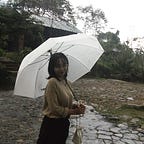The Tragic Death of King Kertanegara: The Form of His Faith in Tantrayana
Have you ever heard about King Kertanegara? Many people don’t know that the last king of Singasari died in bad circumstances. Several historical records state that King Kertanegara died during a sex party and was drunk.
As told in Serat Pararaton and Babad Tanah Jawi, Jayakatwang, who at that time was the regent of Gelanggelang, rebelled to bring down his ancestral kingdom - Kadiri, which was destroyed by the founder of Singasari.
One night when Kertanegara and his ministers were drinking, Jayakatwang and his troops attacked the Singasari Palace. Kertanegara's death occurred at the place where he drank palm wine.
Kidung Harsawijaya also explains a story that is not very different about the attack by Jayakatwang and his troops on the palace where Kertanegara was located. When they arrived at the palace, Prabu Kertanegara and his retainer were said to be partying with sex and alcohol before finally being defeated by Jayakatwang.
But why does Kertanegara behave like that?
Not only is it done for worldly pleasures, it turns out that sexual activities and drinking parties are rituals that are commonly carried out by followers of the Tantrayana sect.
Tantrayana itself is a combination or syncretism of Buddhism and Hindu-Shiva (Pott, 1966). The Tantrayana that Kertanegara adheres to is more like leftist Tantrism which prioritizes the worship of everything that is supernatural, demonic, and elements of women or goddesses.
If we refer to Serat Pararaton again, the origin of why Kertanegara became a Tantrayana follower was his ambition to defeat Kublai Khan- the Mongol Emperor who had supernatural powers from the Heruka of Tantrayana practice. At that time, the Mongol Empire was very successful and succeeded in expanding mainland Europe and Asia.
Kertanegara then secretly prepared himself physically and spiritually by carrying out the Tantrayana ritual. This ritual is called Pancamakara (Philip, 1978), namely doing five prohibited things to achieve enlightenment or nirvana while still alive, including madya (getting drunk), maudra (dancing until tired and fainting), mamsa (eating corpses & drinking blood), matsya (eating poisonous fish), and maithuna (free sex).
The main perspective of this sect is to follow one's desires. For Tantrayana adherents, following one's desires in the most extreme form is considered to exhaust one's own desires, making it possible to concentrate one's power without experiencing obstacles.
Not only notes on fiber or ballads, the assumption that Kertanegara adheres to the leftist school of Tantrism is also reinforced by physical evidence of the Bhairawa statue, the embodiment of king Kertanegara from Singosari Temple.
The Bhairawa statue, the embodiment of Kertanegara, is 167 cm high. Sitting on a dog or wolf completely naked and decorated with skulls and human heads all over his body.
Bhairawa is a term or designation for the leftists of Tantrism. Bhairawa (Sanskrit: भैरव "Terrifying" or "Frightening" ) is also believed to be a giant god in the Tantrayana syncretism, namely the embodiment of Shiva-Buddha as a terrifying giant.
In the form of statues found in Indonesia, Bhairawa has a demonic form, its characteristic is that it has fangs. Sometimes Bhairawa is even depicted naked and wearing scary jewelry, shaped like skulls and snakes, just like those found at Singosari Temple.
References:
Pott, P. H. (1966). Yoga and Tantra . Translation Series 8. Martinus Nijhoff; Leiden.
Rawson, Philip (1978). The Art of Tantra . Thames & Hudson Ltd.
